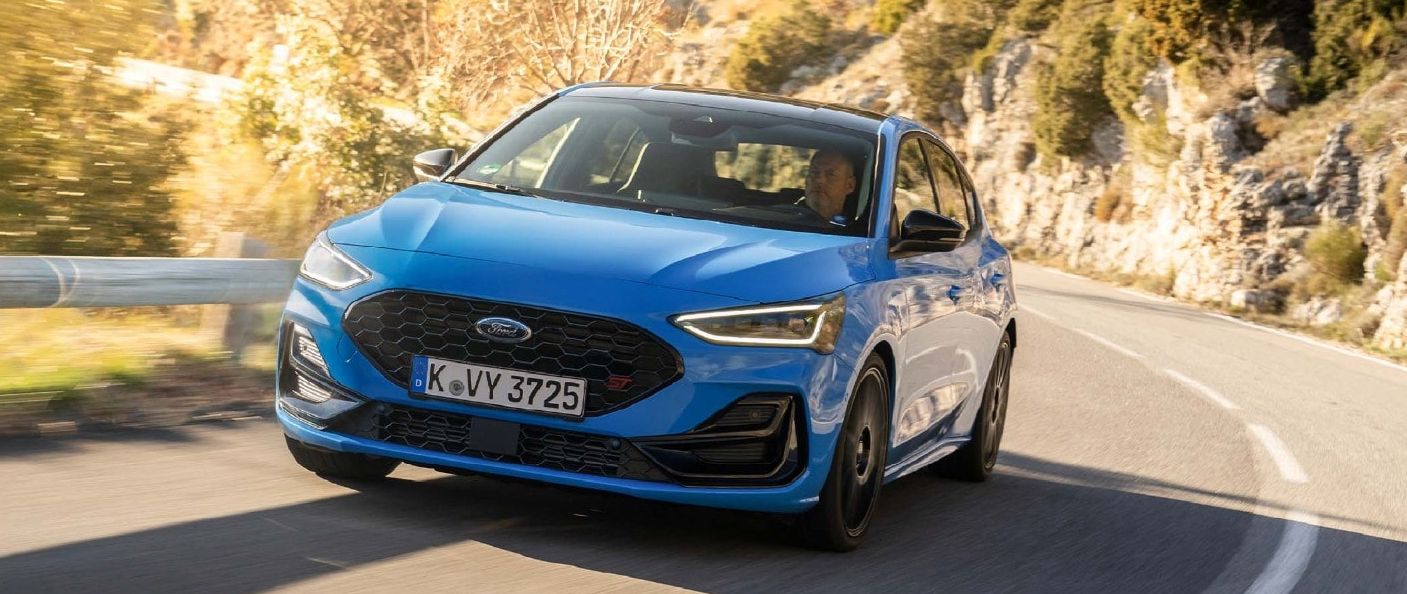When I first encountered brand architecture, I discovered a world where visual style and strategic approach create unforgettable images. In this article, I will share with you the key aspects that will help you create a unique brand that can leave a mark in the hearts of your customers. Ready to find out how?

Glossary
🌟 Brand architecture: The set of elements that form a structured idea of the brand, including visual and verbal components.
🎨 Visual style: Complex of graphic elements, used to create a unique brand identity, including logo, color palette and fonts.
🧩 Classic models of brand architecture: Basic approaches to the brand organization, including the “house of brands” model and the “parent brand” model.
🚀 Basic models of brand architecture: Variations of copyright strategies such as "supporter" and "sub-brand" that help optimize the structure of the product group.
🎯 Brand architecture selection: Analysis and deciding on the best model based on the company’s goals and the characteristics of the target audience.
📈 Positive image: Brand perception in the eyes consumers based on their experiences and associations, which contributes to its popularity and loyalty.
🔍 Target audience (TA): Group people who are targeted by the brand's marketing strategy and products, playing a key role in creating the image.
💡 Brand Strategy: Long-term management plan brand perception and development, which includes a unique positioning in the market.
🛠️ Brand Management: The process of managing everything aspects of the brand to achieve its goals, increase awareness and build loyalty.
🌐 Communication channels: Means through which the brand interacts with the audience, including social networks, websites, advertising and PR.
👩💻 BCG Matrix: tool for strategic analysis and planning in marketing.
Brand architecture: important points for effective use
When I immersed myself in the world of brand architecture, I was always intrigued by the question: how to cultivate a unique company image that would stand out from the competition? After all, the right brand architecture not only shapes identity, but also determines how consumers perceive products and services. In this section, I want to share my story, which resonates deeply with the importance of a network of interconnected brands.

Several years ago I worked on a project for a company that decided to enter a new market with a new product line. We are faced with a question of primary importance: should new products be a separate brand, or can they be associated with existing brands? This moment came up during a brainstorming session when a colleague said a phrase that got us all thinking: “Why waste time creating a new one when we can leverage the strength of our current brand?” This became a key point in our project.
Benefits of good brand architecture
Identity and Productivity: During the discussion phase, we knew that we needed to develop a unique visual style for the new product that would stand out but also complement the existing one. By creating integration between brands, we helped simplify the consumer experience.
Management: We decided to create a strict hierarchy within our brand structure. As a result, everything became easier and clearer. The success arose not only because of the new product, but also because it was in line with the overall company strategy.
Sales: As soon as we introduced the new line , sales soared. We managed to enter a market that we had not even considered before, but thanks to our connection with a famous brand, we did not have to start from scratch.
How to avoid mistakes
A few months after launch new product, it became obvious that the original idea of using an existing brand had its advantages, but also disadvantages. One review I remember said: “I thought this would be a new choice, but it was too similar to something I've already seen.” It was then that we decided to test the new positioning.
Thanks to the right brand architecture, we were able to not only minimize risks, but also optimize our marketing budget. Given that “new life” always involves risks, the only solution was to clearly separate different aspects of products to protect the reputation of existing brands.
“The relationship between brands must be transparent, otherwise the loss of trust in one can lead to problems for all the others,” - Michael Saul Dell, American entrepreneur, Founder and CEO of Dell. He started his company in makeshift conditions, providing homemade modifications of the IBM PC.
Thus, to create real customer value It is necessary to consider not only visual elements such as the logo and color palette, but also the philosophy and positioning of each element in the portfolio.
Steps at a Glance
| Step | Description |
|---|---|
| 1. Defining Identity | Analyze existing brands and their associations. |
| 2. Create a hierarchy | Establish clear connections between brands. |
| 3. Develop a unique style | Create visual and verbal elements for a new product. |
| 4. Testing and Adjustment | Prepare feedback and make changes if necessary. |
| 5. Advertising and promotion | Use joint marketing Strategies to increase reach. |
If you've ever wondered how brand architecture can change perception your products, I hope this story helps you in your future endeavors. It is very important to remember that success lies not only in creating new things, but also in correctly integrating existing elements - this way you can build a strong foundation for your business.
Brand house and brand house: differences and examples
Many would be interested to know why some companies become real business icons, while others are lost among competitors. This reminds me of a project I worked on a few years ago. I was involved in the creation of a new brand, and in the process I clearly saw how the choice of brand architecture affects its perception.

Differences between a brand and a house of brand
In the process of work, we came across the concept of a brand house and a brand house. It's hard to believe that these two models can be so radically different! The Unilever example was helpful to us: none of their products were ever sold under the parent company's name. When we were analyzing their strategy, I remembered talking to my manager: “Why don’t we create our own parallel world, where each product has its own personality?” This was an idea that became popular among our team.
Comparing this to a house brand model where all products go under one name, we made a decision based on our market and our target audience. We strived to create a unique identity for each product so that it could “speak” to its customers, regardless of the artist who created it. The more I delved into the project, the more I realized that it is this kind of individuality that helps a company stand out.
Emotions and personal experience
While working on the project, I remembered how I once observed Sony companies and their variety of products. Their way of organizing their own brand architecture really stood out to me - from gaming consoles to musical sound, they became one of the leaders in their category every time, thanks to the power of the combined move. This inspired me to create something similar, but unique for our brand.

One evening at a meeting with the team, I noticed that some team members, dissatisfied with strict boundaries, were looking for room for creativity. We began to explore how the ideas we were considering could shape the very feel of the brand. My observations led to the conclusion: “The more we focus on originality and uniqueness of products, the more likely consumers are to remember us.”
Valuable lessons
Actually, what follows from this? As I reflected, I realized that the key steps include:
- Market Analysis: Studying how competitor brands build their image helps to adjust the strategy in time.
- Unique positioning: A clear identity for each product category allows you to attract targeted customers.
- Fostered Creativity: Encouraging a team to think outside the box can lead to amazing results.
Statistics show that about 70% of consumers tend to prefer brands with a unique identity. Therefore, creating a targeted brand structure is critical.
"Uniqueness is the key to the customer's heart". - Warren Edward Buffett, American entrepreneur, one of the world's largest and most famous investors with a net worth of over $105 billion. Warren Buffett is one of the richest people in the world.
So, after several months of work, our a project built on these concepts blew up the market with its freshness and creativity. As a result, the company not only survived, but gained the respect and trust of its audience.
Putting it into practice
- Step 1: Study your competitors and their strategies.
- Step 2: Identify unique features for each product.
- Step 3: Assemble a team to brainstorm creative ideas.
With these steps, you can achieve a memorable and attractive image for your brand.
Each of us can create a powerful brand that not only sells, but also becomes a part of people's lives. Let's strive for this together!
Advantages and disadvantages of different brand architecture models
When I plunged into the world of branding for the first time, it was like discovering a new universe. I remember how I had the opportunity to work on a project for a startup that was just starting its journey. This was the moment when I realized how important brand architecture is in creating a unique company image. Can one structure effectively meet all business needs? The answer to this question turned out to be not so simple.

From the early stages of branding development, three main types of architecture have been distinguished: umbrella, multi-brand and hybrid. Each of them has its own advantages and disadvantages, which I have studied in practice. It is important to note that the choice of model significantly affects the perception of the brand by the target audience.
Umbrella Brand
While designing my first umbrella brand, I realized how many benefits it provides. For example, all products under one domain name create a trust effect among consumers. This is a kind of "trust fund". This model includes companies that offer a variety of products but operate under one name, such as Miartorg, which operates a range of products from steaks to pet food. However, even here there is a catch. This approach may lead to increased reputational risks. Negative reviews of one product can damage the entire line.
In this context, I am often reminded of the words of one expert who said: “Notice the impact that even a small scandal has.” That’s when I realized that control over every detail was becoming extremely important. On the one hand, we get saved resources on promotion due to the positive reputation of the main brand. On the other hand, the entire business suffers from the loss of this reputation.
Multi-brand
Another project I worked on chose a multi-brand model. Here I saw a completely different approach - the opportunity to create unique brands for target segments. For example, Ford uses different names for cars to clarify the identity for each target audience. However, in my opinion, this requires significant marketing costs since each sub-brand requires its own promotion.

As my colleague once noted: “When you create a new brand, you start a new world which needs to be developed." This made me more conscious in choosing strategies - after all, it is important not only to create a sub-brand, but also to support it in order to avoid identity blurring.
Hybrid brand
As for the hybrid model, it was a real discovery for me. A hybrid approach allows you to combine the strengths of different structures, adapting them to specific tasks. However, it requires fine management and constant analysis.
The success of this model, in my experience, lies in correctly understanding when and what elements to use. For example, consider Disney, which successfully implemented a hybrid approach by placing its logo on the products of its subsidiaries. This has created a unified flow that is familiar to many and associated with quality.

Total
Brand architecture is becoming a central topic for marketers and business owners. My experience shows that each model has its own strengths and weaknesses. It is important to consider not only the target audience, but also the company’s internal resources. Feel free to think about your own experiences - what brands inspire you? What architecture does your business use?
A Quick Guide to Building a Brand:
| Step | Description |
|---|---|
| 1. | Identify target audience and market research. |
| 2. | Select brand architecture type: umbrella , multi-brand or hybrid. |
| 3. | Create unique positioning for each product . |
| 4. | Develop a general visual style for the umbrella brand. |
| 5. | Consider promoting sub-brands separately. |
| 6. | Constantly analyze the results and make adjustments . |
These are just the basic steps that have helped me in my practice. I hope they inspire you to new achievements! ✨
How to analyze brand architecture
When I started working on brand architecture for my company, I had a lot of questions: “How to differentiate your product from the mass of others?”, “Which brands should be kept and which ones should be removed?” These thoughts led me to a thorough analysis of our product portfolio. The process turned out to be exciting, not without excitement and discoveries.

The first thing I did was assemble a team to analyze each product and service. We created a BCG matrix that allowed us to clearly see the roles of various brands in our portfolio. At the time, I was surprised that sometimes our products, which were no longer relevant, occupied a significant share of the group's attention. It was like encountering a shadow - refreshing the memory that once successful brands are now lost in the flow of new products. 🌪️
Working with the matrix allowed us to identify several “stars” who were clearly profitable, and “difficult children” who needed our support. For example, one of our products, which initially brought us a decent profit, became an obstacle, becoming boring to customers. I remember once a customer who bought this product asked the question: “Why should I choose this product of yours over others again and again?” This was a wake-up call that it was time to make changes.
Once we realized that we needed to change the brand architecture, the idea of a step-by-step approach to rebranding was born. It was necessary not only to relaunch products, but to do it meaningfully so as not to lose customers. We started with regular surveys and interaction with the target audience to understand what changes were really needed. 💡
With the process of building the hierarchy, everything became obvious. I decided to prioritize and allocate resources depending on the financial capabilities of the company. It turned out to be difficult, but the solution came - focusing on several strong brands provides a more stable income than trying to deal with them all at once. 💰
Then I remembered about competition in the market. It is important to understand that each of our “brainchild” (brand), which we bring to the public, in one way or another influences the others. I once heard from our marketer: “We can create different brands, but we must not forget about the same philosophy.” This was an eye-opener: interaction between brands is one of the most important parts of architecture.
As a result, through focus groups and conversations with clients, I saw how important it is to create your own story around each product. This created a more trusting attitude, allowing the formation of a recognizable image. One day, I met with that same client again, and instead of asking questions about our brand, I confidently and proudly told about what changes had been made. She was pleasantly surprised and happily shared her story with her friends. 🌟
To achieve success, you need to not only analyze, but also implement positive changes by communicating with customers and based on their feedback. This is not just a business process, it is the creation of stories and images that will live longer than ourselves.

Brand architecture analysis steps
| Step | Description |
|---|---|
| 1. Product portfolio analysis | Evaluate each brand for relevance and market impact. |
| 2. Creating a BCG matrix | Visualize the state your portfolio to understand priorities. |
| 3. Interaction with customers | Conduct surveys for collecting opinions about your products. |
| 4. Building a brand hierarchy | Set priority accents depending on business strategy. |
| 5. Development and implementation of strategies | Based on focus groups and analysis, develop clear steps. |
Often FAQs on the topic: Brand Architecture
What is brand architecture?
Brand architecture is a structure that allows you to organize brands and their sub-brands into a single system in order to manage them better and create a clear image in the market.
Why do we need brand architecture?
Brand architecture helps shape a cohesive strategy that builds trust and recognition and improves customer engagement.
What are the main brand architecture models?
There are several models such as umbrella, multi-brand and hybrid which are used depending on the strategy of the company.
How to create a unique visual style for a brand?
Creating a unique visual style requires researching your target audience, analyzing your competitors, and developing design elements that reflect your brand's values and mission.
How to choose the right brand architecture?
The choice of brand architecture depends on business goals, product portfolio structure and preferences of the target audience, as well as the company culture.
How does brand architecture influence marketing strategy?
Brand architecture determines how marketing messages will communicate with the target audience, which in turn influences the perception of the brand and its proposition.
How to evaluate the effectiveness of a brand architecture?
The effectiveness of a brand architecture can be assessed through metrics such as awareness, brand preference, customer loyalty and financial performance.
Is it possible to change the brand architecture?
Yes, changing a brand's architecture is possible, but it requires careful planning and analysis to avoid consumer confusion and maintain brand trust.
How to create a positive brand image?
Creating a positive brand image requires persistence in providing quality service, business transparency and proactive customer engagement.
How to use brand architecture to increase sales?
Using brand architecture to increase sales includes creating consistency between products, a cross-selling scheme, and strengthening brand awareness through effective marketing campaigns.
Thank you for reading and for becoming more advanced! 🌟
Every word you read has added to your knowledge and increased your confidence in brand architecture. Now you are not just a reader, but a professional, ready to create an unforgettable image. I shared with you my experience, examples of successful projects and effective strategies. In this competitive world, it is your insight that turns ideas into results. 🚀 Write in the comments what you think about this article and what steps you plan to take!
Svetlana Sibiryak, independent expert at Elbuz, about herself: “The magic of words in the symphony of online store automation. Join my guiding text course into the world of effective online business!”
.gif)
- Glossary
- Brand architecture: important points for effective use
- Brand house and brand house: differences and examples
- Advantages and disadvantages of different brand architecture models
- How to analyze brand architecture
- Often FAQs on the topic: Brand Architecture
- Thank you for reading and for becoming more advanced!
Article Target
Educate readers about the basics of brand architecture and the importance of branding.
Target audience
Marketers, business owners, branding students.
Hashtags
Save a link to this article
Svetlana Sibiryak
Copywriter ElbuzThe magic of words in the symphony of online store automation. Join my guiding text course into the world of effective online business!
Discussion of the topic – Brand architecture
Research of key aspects of brand architecture. Creating a unique visual style and strategy to create a positive image.
Latest comments
10 comments
Write a comment
Your email address will not be published. Required fields are checked *























.png)


Светлана Сибиряк
Let's discuss how important personality is in brand architecture. Every element, from color to font, creates a perception. What examples of successful and unsuccessful brands come to mind?
Tom Brown
Svetlana, interesting question! I'm crazy about how brands like Apple use minimalism to create an image. Is it true that less is more? 🍏
Anna Müller
Tom, I agree! Minimalism really stands out especially in a crowded visual space. What about the emotional connection with the brand? Can it replace visual style?
Pierre Dupont
For me, emotional connection is the key. Personally, I have become a fan of brands that create status and community. What about brands that don't? 🤔
Isabella Rossi
Pierre, you're right! Successful brands know how to bring people together. For example, Nike does this through inspiration. How do you like their sports strategy?
Marek Nowak
Isabella, it seems to me that not only inspiration is important, but also the sustainability of the brand. How do they behave in a crisis? Nike has an example, but what about lesser-known brands?
Olga Petrenko
Marek, for small brands sustainability is a challenge! I believe that a good story can help you stand out from your competitors. What stories do you remember?
Gronk Sdc
All this talk about brands seems absurd to me. After all, isn't the product itself important? I don’t understand these trends for young people. 😒
Светлана Сибиряк
Gronk, that's a good point. However, even the best product can get lost without a strong image. A brand is part of an identity. Don't you think it's worth keeping up with the times?
Tom Brown
Svetlana, it’s clearly said! Every product needs its own 'face'. Behind this lies recognition and trust. How about taking a look at old brands and how they've changed?